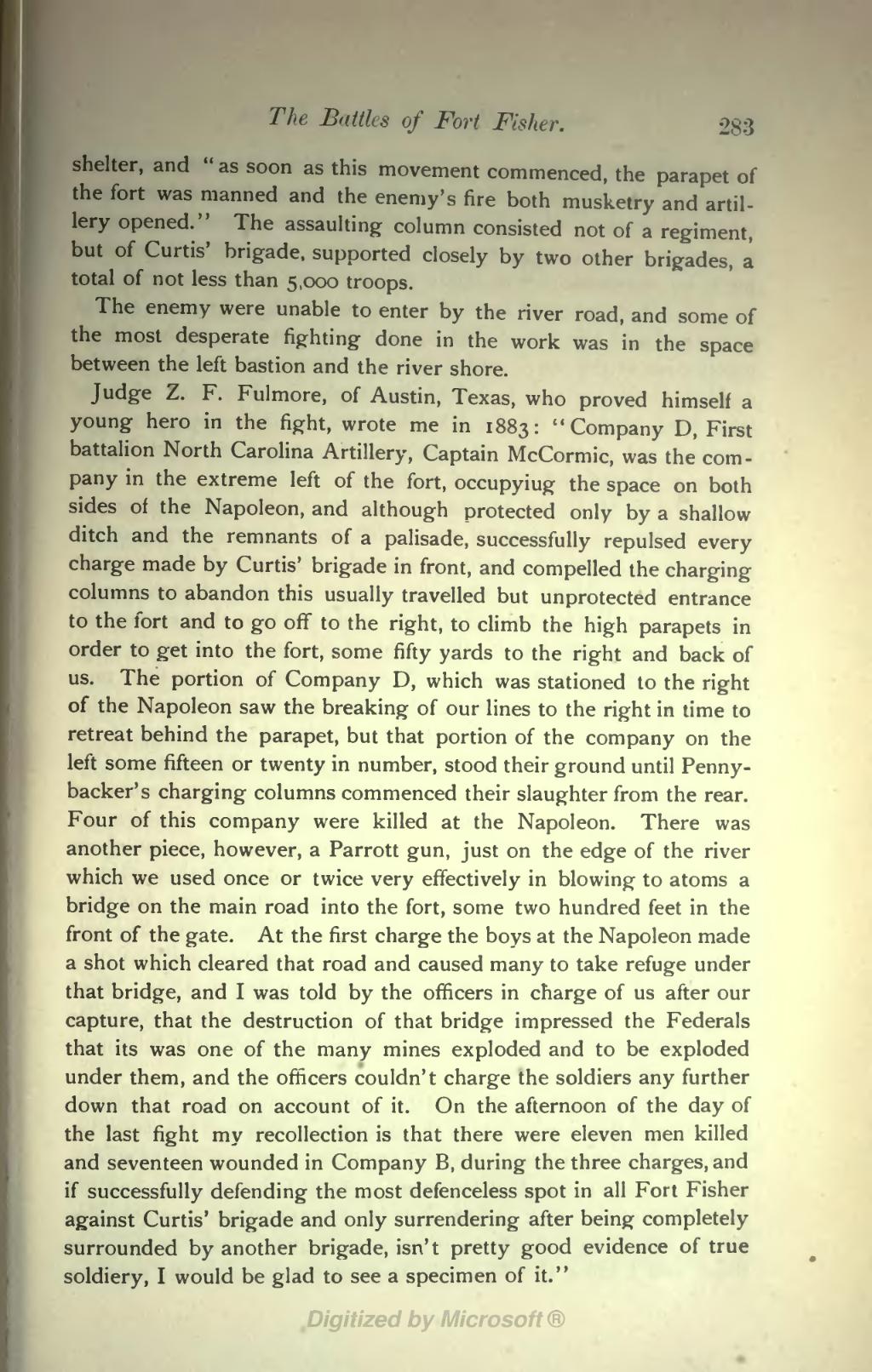Tin /?,////,> of F.,rt Fisher.
shelter, and " as soon as this movement commenced, the parapet of the fort was manned and the enemy's fire both musketry and artil- lery opened." The assaulting column consisted not of a regiment, but of Curtis' brigade, supported closely by two other brigades, a total of not less than 5,000 troops.
The enemy were unable to enter by the river road, and some of the most desperate fighting done in the work was in the space between the left bastion and the river shore.
Judge Z. F. Fulmore, of Austin, Texas, who proved himself a young hero in the fight, wrote me in 1883: "Company D, First battalion North Carolina Artillery, Captain McCormic, was the com- pany in the extreme left of the fort, occupyiug the space on both sides of the Napoleon, and although protected only by a shallow ditch and the remnants of a palisade, successfully repulsed every charge made by Curtis' brigade in front, and compelled the charging columns to abandon this usually travelled but unprotected entrance to the fort and to go off to the right, to climb the high parapets in order to get into the fort, some fifty yards to the right and back of us. The portion of Company D, which was stationed to the right of the Napoleon saw the breaking of our lines to the right in time to retreat behind the parapet, but that portion of the company on the left some fifteen or twenty in number, stood their ground until Penny- backer's charging columns commenced their slaughter from the rear. Four of this company were killed at the Napoleon. There was another piece, however, a Parrott gun, just on the edge of the river which we used once or twice very effectively in blowing to atoms a bridge on the main road into the fort, some two hundred feet in the front of the gate. At the first charge the boys at the Napoleon made a shot which cleared that road and caused many to take refuge under that bridge, and I was told by the officers in charge of us after our capture, that the destruction of that bridge impressed the Federals that its was one of the many mines exploded and to be exploded under them, and the officers couldn't charge the soldiers any further down that road on account of it. On the afternoon of the day of the last fight my recollection is that there were eleven men killed and seventeen wounded in Company B, during the three charges, and if successfully defending the most defenceless spot in all Fort Fisher against Curtis' brigade and only surrendering after being completely surrounded by another brigade, isn't pretty good evidence of true soldiery, I would be glad to see a specimen of it."
